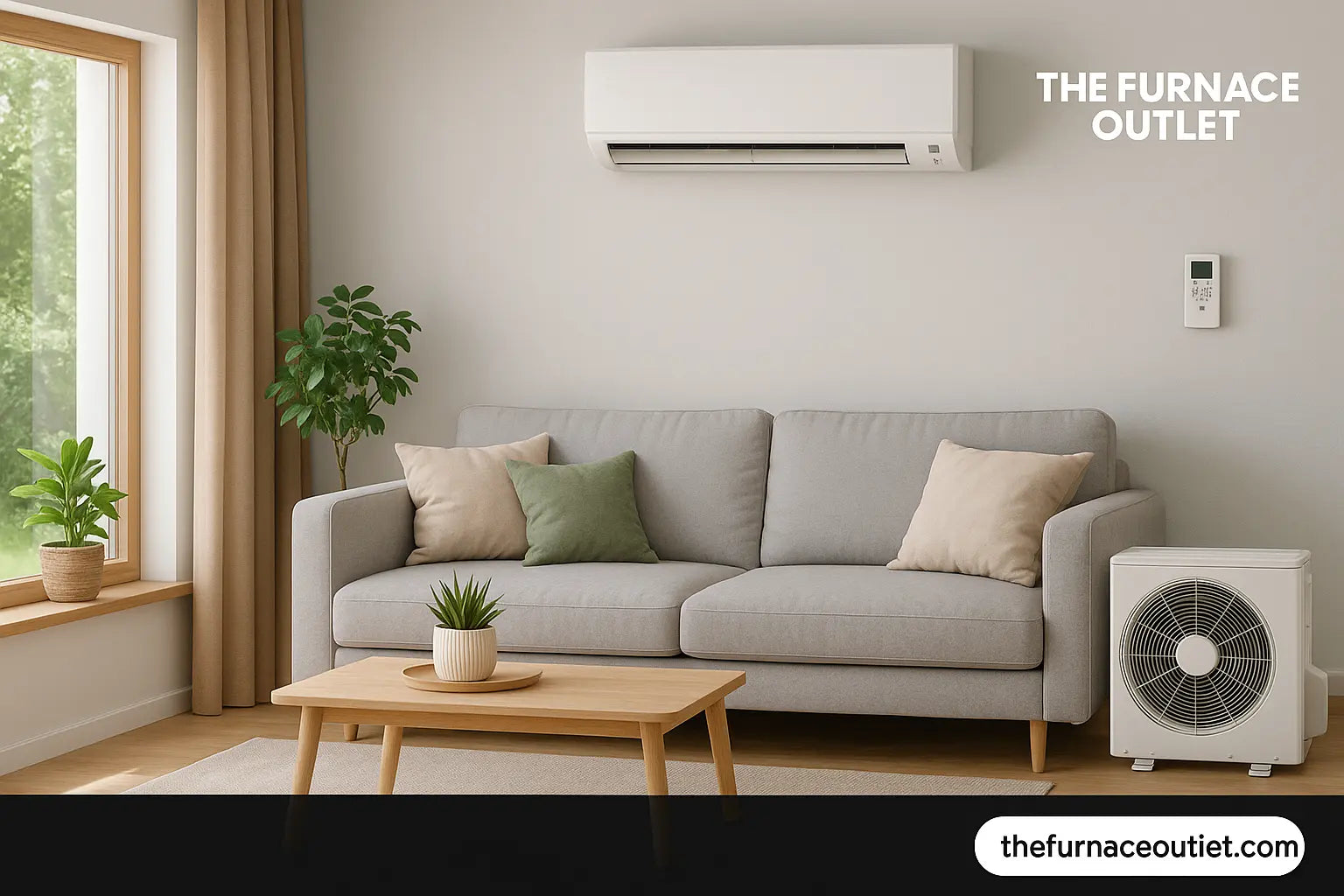Creating a comfortable home goes beyond just picking the right thermostat setting—it starts with choosing the right HVAC system for the space. Mini-split systems, known for their flexibility and energy-saving design, offer a powerful solution when traditional systems fall short. But they aren’t one-size-fits-all.
To recommend a mini-split with confidence, you need to consider the home’s layout, zoning needs, and energy efficiency goals. Whether you're a contractor helping clients or a homeowner weighing your options, this guide breaks down when mini-splits make the most sense.
Browse systems made for every layout: Shop Mini-Splits by Home Style
How Layout Shapes HVAC Performance
Every home is different. From open floor plans to multi-level designs, the layout directly affects how air moves and how well a system performs.
-
Open-concept spaces benefit from mini-splits because a single system can cover large areas without relying on ducts.
-
Multi-story homes often struggle with temperature inconsistencies. Mini-splits solve this by allowing each floor—or even each room—to be independently controlled.
-
Older homes or additions where ductwork is hard to install are perfect candidates for ductless systems.
By placing indoor units where they’re needed most, mini-splits ensure each zone gets the right amount of heating or cooling—without wasting energy in unused areas.
Zoning for Personalized Comfort
Zoning is more than a luxury, it’s a smart approach to comfort and efficiency. Mini-split systems excel at zoning because they give each room or area its own thermostat and indoor unit.
-
Bedrooms can stay cooler at night.
-
Sunrooms, nurseries, and home offices can each maintain their ideal conditions.
-
Living spaces can adapt throughout the day based on occupancy.
This kind of targeted control helps prevent energy waste and allows each part of the home to stay comfortable year-round, even as outdoor temperatures swing.
Create your comfort zones now: Explore Zoning Solutions
Why Energy Efficiency Should Guide Your Decision
Energy efficiency isn’t just about savings, it’s about performance and sustainability. Mini-splits lead the way thanks to several key design features:
-
Inverter technology adjusts compressor speed to meet demand, reducing energy usage.
-
Ductless operation eliminates the heat loss common in traditional ductwork.
-
Zoning ensures only occupied rooms are conditioned, which further cuts energy costs.
Many mini-split systems are also ENERGY STAR certified, and with smart home integrations, users can control temperature and monitor usage from anywhere. That means fewer surprises on the utility bill—and a smaller environmental footprint.
What Sets Mini-Splits Apart
Beyond flexibility and efficiency, mini-splits offer features that elevate the experience:
-
No ducts required, which makes them ideal for retrofits and historic homes.
-
Quiet operation, especially compared to central units.
-
Advanced air filtration, which helps improve indoor air quality.
-
Smart control options, including apps, voice assistants, and programmable schedules.
These benefits make mini-splits appealing not just for comfort but for long-term living quality, especially for families with allergies, pets, or variable routines.
Matching Mini-Splits to Home Layouts
To get the best performance from a mini-split system, it’s essential to match the setup to the layout.
-
Open-plan homes can be served with fewer indoor units, strategically placed for airflow.
-
Compartmentalized homes benefit from multiple indoor units across rooms or wings.
-
Multi-level properties see better comfort with separate systems for each floor.
Don’t overlook challenging spaces like basements, attics, or converted garages. These areas often struggle with temperature extremes and benefit significantly from mini-split control.
How to Evaluate Zoning Requirements
A solid mini-split setup starts with assessing zoning needs. Begin by answering these:
-
Which rooms are used most often?
-
Do certain areas get hotter or colder than others?
-
Are there rooms that stay unoccupied most of the time?
Also factor in insulation, sunlight exposure, ceiling height, and appliance heat. Once you understand these elements, an HVAC professional can design a system that’s properly sized, placed, and zoned for maximum efficiency and comfort.
Ready to build your zones? Visit our Zoning System Collection
Mini-Splits vs Traditional HVAC Systems
Traditional HVAC systems often rely on centralized units and ductwork to control the climate. While effective for many homes, they come with drawbacks:
|
Feature |
Traditional HVAC |
Mini-Split System |
|
Ductwork |
Required |
Not needed |
|
Zoning |
Limited |
Built-in |
|
Installation |
Invasive |
Flexible |
|
Energy Efficiency |
Moderate |
High |
|
Control |
Centralized |
Room-by-room |
Mini-splits give you the control and flexibility that standard systems can’t match, especially in complex layouts or homes with evolving needs.
Understanding Costs and ROI
Upfront, mini-splits can seem more expensive than traditional systems—especially when multiple indoor units are needed. But the long-term payoff is where they shine:
-
Lower utility bills thanks to efficient zoning and inverter-driven compressors
-
Reduced maintenance with no ducts to clean or repair
-
Longer lifespan with less strain on the system
Factor in federal or state rebates, and the return on investment becomes even more attractive. For many homeowners, the payback period is surprisingly short.
Final Thoughts on Recommending Mini-Splits
Mini-split systems aren’t the right choice for every home—but when layout complexity, zoning needs, or energy goals come into play, they’re often the smartest solution. Their quiet performance, low maintenance, and tailored comfort give homeowners the control and efficiency they’re looking for.
If you’re evaluating HVAC options for a unique space, don’t overlook the value of a properly designed mini-split system. It may be the key to year-round comfort without compromise.
Take the Next Step Toward Total Comfort
Whether you’re upgrading a single room or designing for the whole house, The Furnace Outlet has the tools, products, and support you need.







